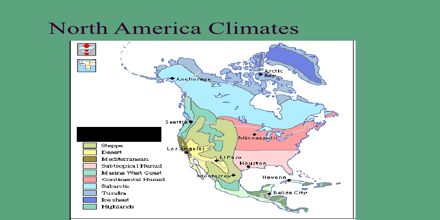The human experience is akin to a grand symphony, where each individual plays a note in the vast composition of life on Earth. Our collective actions resonate through the environment, and just as music can inspire and uplift, so can our decisions about energy consumption forge a path toward a more sustainable existence. Conserving energy is not merely a personal endeavor; it is a shared responsibility that calls for concerted efforts from every corner of society. In our quest for a greener planet, we must embrace transformative strategies that harmonize with the rhythms of nature.
Energy conservation can be likened to a gardener nurturing a blossoming garden. Each purposeful action contributes to a flourishing ecosystem, ensuring longevity and vitality. The foundation of this garden lies in understanding the myriad forms of energy we consume and the environmental impact of our choices. From electricity that powers our homes to the fossil fuels that drive our vehicles, the energy we utilize paints a picture of our ecological footprint. By recognizing the relationship between our daily habits and the sustainability of our planet, we can cultivate a mindset geared towards conservation.
Embracing renewable energy sources is a paramount step in this conservation journey. Just as the sun nourishes the earth, solar, wind, and hydroelectric energy offer abundant, sustainable alternatives to fossil fuels. Individuals and communities can harness sunlight by installing solar panels, thus converting rooftops into mini power plants. Transitioning to wind energy through the establishment of wind farms can provide clean, renewable power for entire regions. These endeavors not only reduce dependence on non-renewable sources but also foster local economies by creating jobs in the green energy sector.
However, the heart of energy conservation extends beyond merely utilizing renewables; it also encompasses a shift in consumption habits. Our homes can become sanctuaries of sustainability. Simple actions such as using energy-efficient appliances, implementing smart home technology, and embracing LED lighting can lead to substantial reductions in energy usage. These technologies serve as the roots of our energy-efficient ecosystem, grounding our sustainability efforts while nurturing a healthier environment. Furthermore, sealing drafts and improving insulation can enhance home energy efficiency, reducing the need for heating and cooling and consequently lowering energy expenditure.
It is crucial to understand that energy conservation transcends individual households; it encompasses entire communities banding together for collective action. Community programs that promote energy-saving initiatives can amplify the impact of individual efforts. For instance, local organizations can facilitate workshops focused on energy conservation techniques or initiate collective purchasing programs for solar panels. These communal endeavors not only democratize access to renewable energy solutions but also cultivate a sense of belonging—a shared camaraderie in the pursuit of ecological stewardship.
Moreover, cities can be reshaped through urban planning that prioritizes sustainability. Initiatives aimed at creating walkable neighborhoods, expanding public transportation, and promoting bicycles can transform the urban landscape and significantly reduce energy consumption associated with transportation. When designed thoughtfully, cities become living organisms, flowing smoothly with reduced emissions and amplified air quality. Therefore, supporting policies that advocate for green infrastructure can catalyze change at a much greater scale.
Education serves as another pivotal mechanism through which energy conservation can flourish. By fostering a culture of awareness around energy use and its environmental implications, individuals can be inspired to make conscientious decisions. Schools and educational institutions should integrate environmental education into their curricula, guiding future generations towards sustainable practices. Knowledge is a powerful catalyst, capable of igniting the collective spirit needed to tackle formidable challenges such as climate change.
While large-scale initiatives are vital, personal decisions should not be underestimated. An individual’s choice to reduce energy consumption creates ripples of change. Carpooling, embracing public transport, or minimizing driving times can cumulatively lead to significant energy savings. Moreover, practicing mindful consumption—being selective in purchasing goods, prioritizing quality over quantity—contributes to reduced energy usage embedded in production and shipping processes. Each conscious choice is akin to a drop in the ocean; together, they forge waves of transformation.
In the face of climate change and environmental degradation, advocating for policy changes is imperative. Citizens can engage in grassroots movements, lobbying for legislation that prioritizes renewable energy production and energy efficiency standards. By holding businesses and governments accountable, society strengthens its resolve to transition towards a greener future. The interconnectedness of individual actions and broader political movements reveals the power of collective ambition; together, we can sculpt policies that will have lasting impact.
Ultimately, the endeavor of energy conservation is a communal tapestry woven together through individual threads. Each action, no matter how small, plays a crucial role in painting a vibrant picture of sustainability. The metaphor of a forest comes to mind; when trees unite their roots, they create a robust ecosystem that withstands storms and thrives amid adversity. In our global habitat, we must unite our collective strength to combat the challenges we face today.
As stewards of the planet, it is our duty to nurture and protect the world we inhabit. By employing diverse strategies and engaging in collective actions to conserve energy, we embark on a monumental journey towards a greener future. Our choices today will resonate through the ages, echoing the melody of conservation for generations yet to come. Together, let us harmonize our efforts, enhance our impact, and cultivate a sustainable paradise for our Earth, a sanctuary where biodiversity flourishes and future inhabitants thrive.








